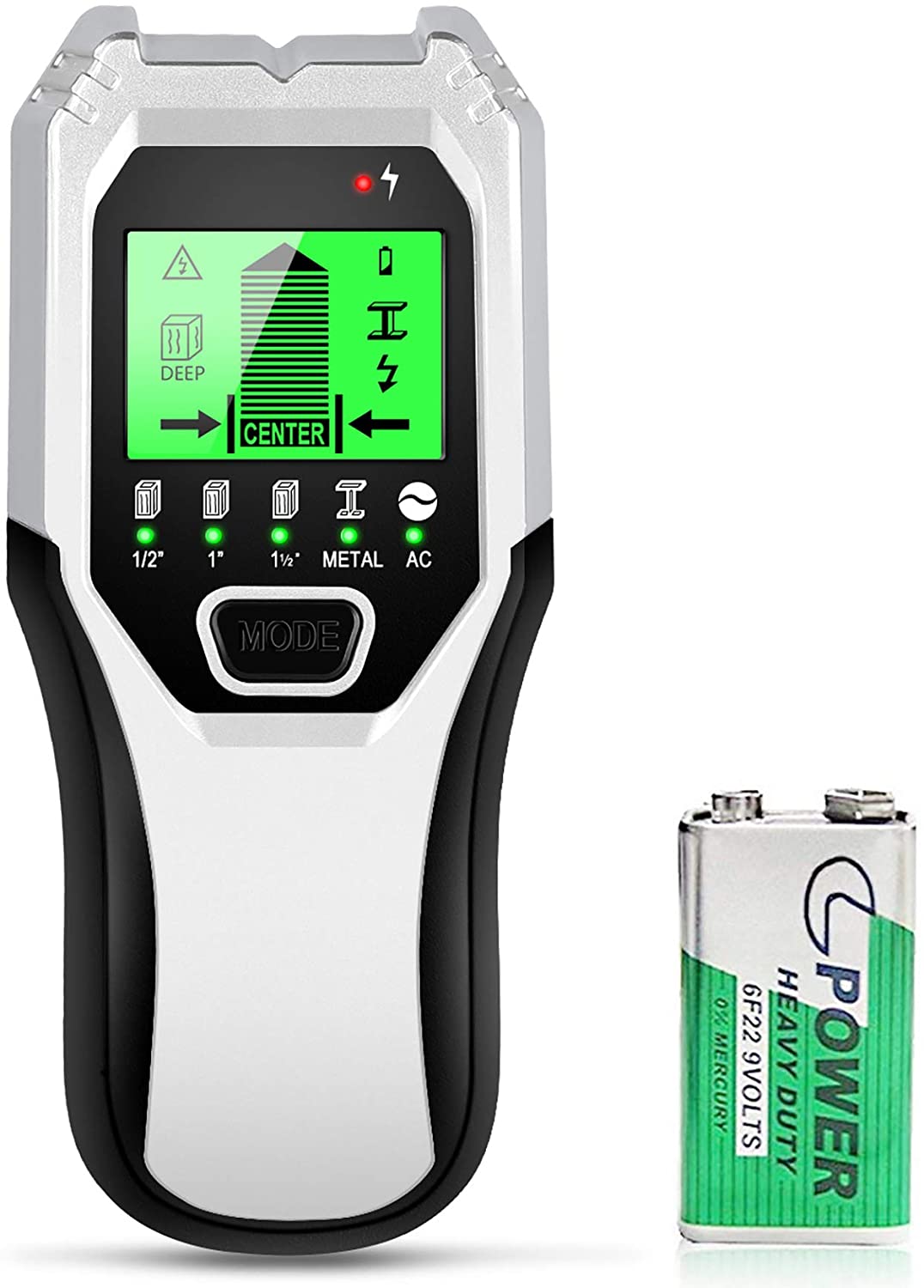Stud finders are handheld devices that locate thick pieces of wood inside walls. These studs are used for framing and mounting. There are many applications for a stud, such as mounting a TV wall mount or hanging up a picture frame. It also allows you to avoid wires and rebar when you’re in the process of opening up a wall. Different stud finders function in different ways but have the same goal, to find the exact location of a stud efficiently.
This makes choosing the right one very important. With this, we made a list of the five best stud finders that have been reviewed by our in-house professionals. We will give you all the essential information you need to find the best stud finder for you. Now let’s get to the list and don’t forget to click that button to check out these great prices.
Best Stud Finders Comparison & Rating
Stud Finders | Features |
1. Tavool Stud Finder
This stud finder offers the best deal on the list for people who are willing to spend for quality. You get 5 different modes that give you very good versatility. It has a max depth range of 60mm or 2 34/64 inches. This gives you great accuracy when scanning your walls. Tavool has years of experience developing the technology in its stud finders. If you want a stud finder that offers great quality for the price, this is the one for you.
2. FOLAI Stud Finder
Like the number one pick on the list, this stud finder has 5 modes that give you different depths and material detection. You get high-grade ABS plastic which ensures a high-quality durable case that also has good ergonomics. The sound indicator for locating the center of a stud makes use easy. The 3-inch deep scan mode is great for thicker walls. This is a solid choice for a good reliable stud finder.
3. VIVREAL Stud Finder
This stud finder makes quick work of finding studs thanks to great internals and a simple design that is intuitive and functional. You don’t only get 5 scanning modes, you also get a digital level. The digital level is a good addition because you can just use the stud finder to level out what you are mounting on the wall. If you want a stud finder that offers more for the price, this is a great choice.
4. Tavool Stud Finder
This stud finder’s tapered design makes it the best to hold compared to the others on the list. You also get a bright and clear display that has an intuitive layout. Its audio alarm and fool-proof LCD screen make locating stud centers and edge an easy task. This is the stud finder to get when you want one that is intuitive and accurate.
5. CRAFTSMAN Stud Finder
Craftsman has made this terrific stud finder that is a complete bargain. This stud finder does one job and does it well. This does not have multiple modes and depths like the others on the list. It only has a depth of ¾ inches. It is accurate and well made with high-quality ABS that is Shock & Water-Resistant. The main selling point is the price, if you want a stud finder that is incredibly budget-friendly this is the one.
Best Stud Finders - Buyer's Guide
There are two main sensors that stud finders have, magnetic sensors and electronic sensors. Magnetic sensors are typically used in the more budget types of stud finders. This is because they don’t need electronic parts and batteries or any other power source. Magnetic sensors rely on strong rare-earth magnets that locate the stud via the nails used during the wall’s construction.
Electronic sensors on the other hand check for the depth of a wall and changes in density This makes their scanning more accurate because they can distinguish between drywall and a solid stud behind the drywall. These stud finders also offer additional features like edge detection of a stud, digital displays, and multiple scanning modes. This makes them more expensive and more complicated to use.
Most magnetic stud finders don’t have a display This is because they indicate the location of a stud by stopping in place. Only electronic models have displays that convey the location of the center of the stud.
Some electronic models only have an LED that blinks or illuminates when it detects a stud. Others come with an LCD screen that could have a visual system that explains how close or far you are from a stud. Some also have icons that tell you if you’re operating in or using a different scanning mode. You might also get one that also has a visual indicator that the battery is running low. You should look for a stud finder that has an intuitive display that can easily be understood.
Each stud finder will have a different sound indicator, and it’s all based on the type of sensor. Magnetic stud finders rarely have another alert system. Electric stud finders will always have a visual indicator on the display to tell you the location of a stud.
When you want to really make sure you never miss a stud, go for models that also offer an audible warning beep. These will trigger every time you go over a stud.
A well-designed stud finder will be easy to grip and use for extended periods. If a stud sensor is uncomfortable to hold it can affect the accuracy of the readings. You could get a false reading from the stud finder if you drift a lot when scanning. This is because it could lose its calibration.
This feature will only be seen in more advanced electronic scanners. This is because it involves a more complex and expensive internal system. Stud finders that have center targeting capabilities make locating the center point of the stud easy through scanning. You don’t have to do manual calculations and hope that the size of the stud is standard.
You locate the center of a stud by making multiple passes which let the scanners recalibrate to determine the exact size of the stud by using the edges of the stud. This can take some time because it needs to decrease the detection zone and locate the center.
Best Stud Finders - FAQs
Most models have a max depth of about 2 ½ to 3 inches.
No, concrete is too dense and thick. You can only use stud finders on thin wall material like drywall and plasterboard.
Stud finders can only see the wall in one location at a time because of this the user needs to slide the stud finder back and forth across the wall to detect and learn the wall.
To verify whether the stud you located is metal or wood, you need a MultiScan stud finder that has a metal Scan mode. Switch to this mode and scan the stud again. If you receive a positive metal indication the stud you located is metal.











